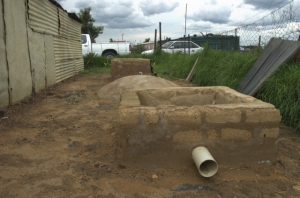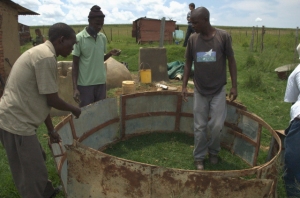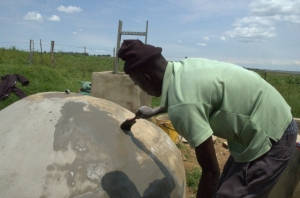This article caught my attention: Religion forces science teacher to quit. I immediately identified with the one-word commentary of the person who shared the link on Facebook: yikes! According to News24 the teacher said that she put teaching natural selection on the syllabus for the year, but that the teachers in the school’s science department were mainly Christian and that “staff issued a reprimand” over teaching evolution. Referring to the head of biology in the school, the teacher was quoted as saying:
What he actively does in class is he poo poos the idea [of evolution], he makes kids laugh at the idea of the age of the Earth as proposed by scientists currently. He poo poos the fossil record, he gives what he believes is counter evidence to carbon dating.
What I find very disturbing about this approach followed by some of my fellow Christians, is that nobody wins. Instead of creating an opportunity to teach children and teenagers to think about the natural sciences, religion and modern biblical scholarship, it just deepens the polarisation in a debate where nobody seems to listen to each other and therefore nobody learns anything. I was not surprised to read psychohistorian Auke Slotegraaf’s remark (I didn’t try to improve the English since I’m simply quoting from the News24 article):
Sometimes the world is very complicated it is difficult to communicate science to the public and the result is that some people have a negative view of science and then science communicators then bend over backward to try and accommodate people while they on the other hand, they know it is E=mc², it’s not E=mc² plus baby Jesus.
I fail to see what Einstein’s equation has to do with the creation(ism) vs evolution debate. Maybe I’m missing something here. Moreover, to say that it’s not E=mc² plus baby Jesus, sounds like a very emotional reaction to me that totally misses the point. Why haven’t we made significant progress in this debate? Why do we always run into a dead-end, even before the debate can start?
I think there are at least seven reasons for this:
- We underestimate the power of worldviews, paradigms and presuppositions
- There are huge misunderstandings in the debate
- People get very emotional very quickly when they encounter opposing views and it is an open secret that emotional reactions are not conducive to rational thinking
- People forget that all of us were issued with two ears and one mouth, so they forget to listen carefully before they talk/write
- People love creating caricatures of those on the other side of the debate, instead of trying to understand them better
- Many people on both sides of the debate totally misunderstand the Bible
The seventh reason is that I don’t think we will make progress by debating the issue. We will only make progress if we dialogue about it. In a debate there must be a winner. In a dialogue, the objective is not to win, but rather to clarify issues, to try and understand where the other party is coming from, to learn something from somebody else even if you differ fundamentally from that person.
What should we as Christians learn? Not only do we need to learn more about the theory of evolution, we also need to learn a few things about the Bible. There’s a very long list of things to learn, but for starters let me just mention the following:
- Evolution concerns itself with the basic question: Where do species come from? It doesn’t try to answer the question whether there is a God or not
- There is nothing in the Bible that proves natural selection right or wrong. The Bible wasn’t written to answer these questions
- Genesis 1 and 2 are not modern scientific texts and should not be read as such
- Genesis 1 and 2 are ancient texts, using language that made a lot of sense to people living in the ancient world
- In the ancient world, people had a radically different understanding of the world and the universe to the one we have today
- Some elements of the ancient worldview:
- The earth was thought to be a flat surface standing on pillars in the sea – today we know that the earth is a sphere
- The sky was thought to be a dome, stretched like a canopy from east to west, beyond which were “the heavens”, the dwelling place of God or the gods (depending on your religion) and other spiritual beings – today we know that the atmosphere is a thin layer around the earth. Are there really Christians who believe that God stays somewhere out there in space? According to my understanding God exists outside of time and space and is present everywhere!
- The sun, moon and stars were thought to be attached to the sky like lamps – Does any Christian believe that?
- According to Genesis 1 God created light on day 1 and the sun, moon and stars on day 4
- The order in which God creates things in Genesis 1 differs from the order in Genesis 2
- So maybe it doesn’t make sense to read Genesis 1 and 2 as modern scientific texts about the origin of the universe, the age of the earth and the origin of species
- Maybe we need to take note of other ancient literature, such as the Babylonian creation myth, the Enuma Elish, written in Akkadian cuneiform on 7 tablets in honour of the Babylonian god Marduk, recovered during the middle of the 19th century
- Maybe we need to pay attention to the mass of scientific research done since the beginning of the 19th century by a host of brilliant scholars on loads of ancient texts, to try and piece together the puzzle of how the different stories in the book of Genesis came together into the single written volume we have today
- Maybe the crisis of the Babylonian exile can shed some very important light on this and other puzzles. The Babylonian invasion of Jerusalem around 586 bc and the subsequent exile into heathen territory caused such an existential crisis for the Israelites who lived in the southern kingdom of Judah, that it probably helped set a process in motion whereby they started to write down their oral stories that were handed down to them over centuries from father to son. Psalm 137, the inspiration behind Bony M’s popular song, By the rivers of Babylon, captures some of the raw emotion they experienced during this period.
Maybe we need to carefully re-read Genesis 1 and 2, taking into account the insights gained from the historical critical research on the Old Testament that continues to grow today. Maybe a whole new world will start to open up for us if we take these beautiful texts seriously as ancient literature written by people who believed in one creator God, surrounded by many other nations who were worshiping amongst other things, the sun, moon and stars as gods.

















Recent Comments